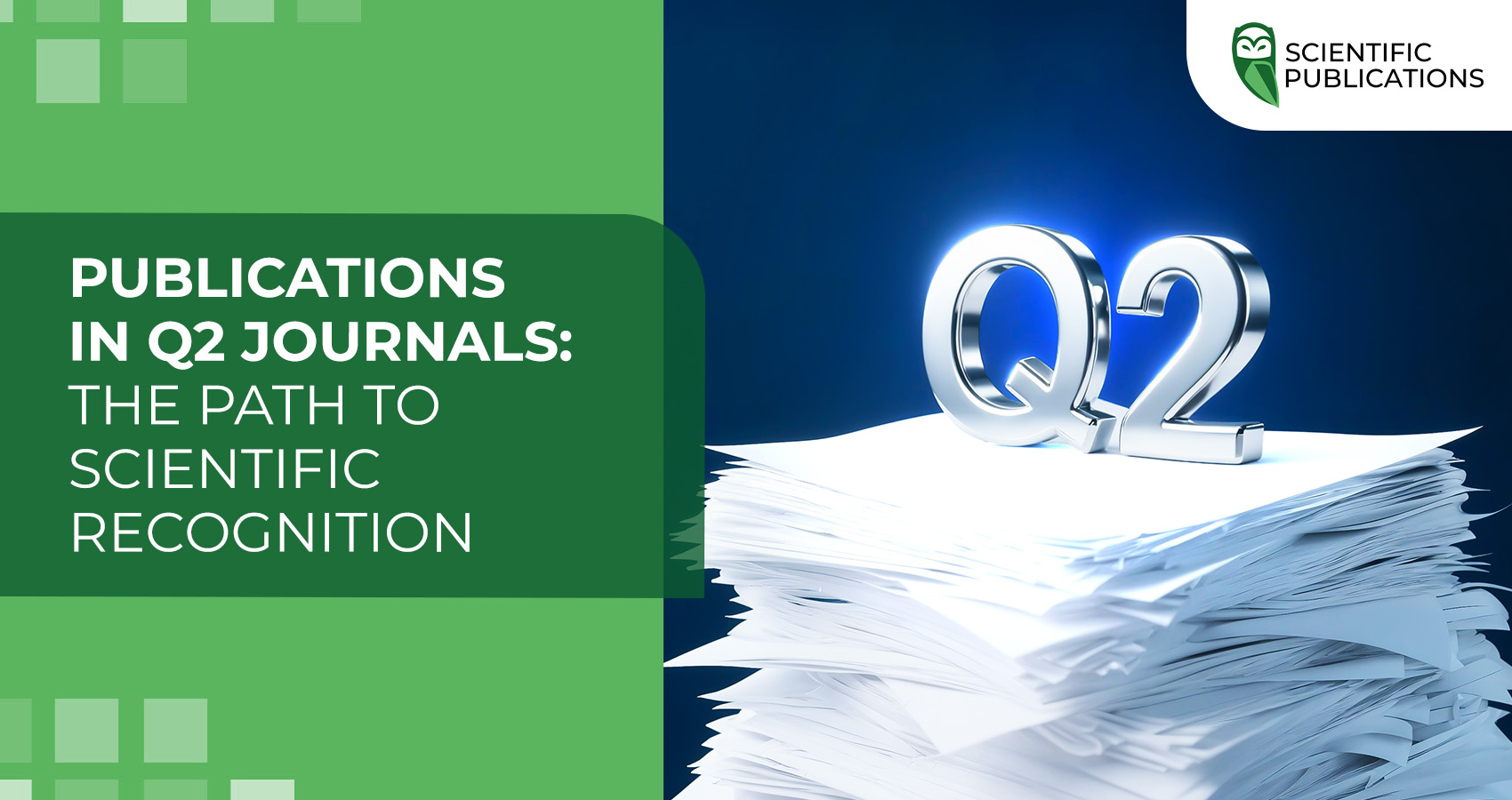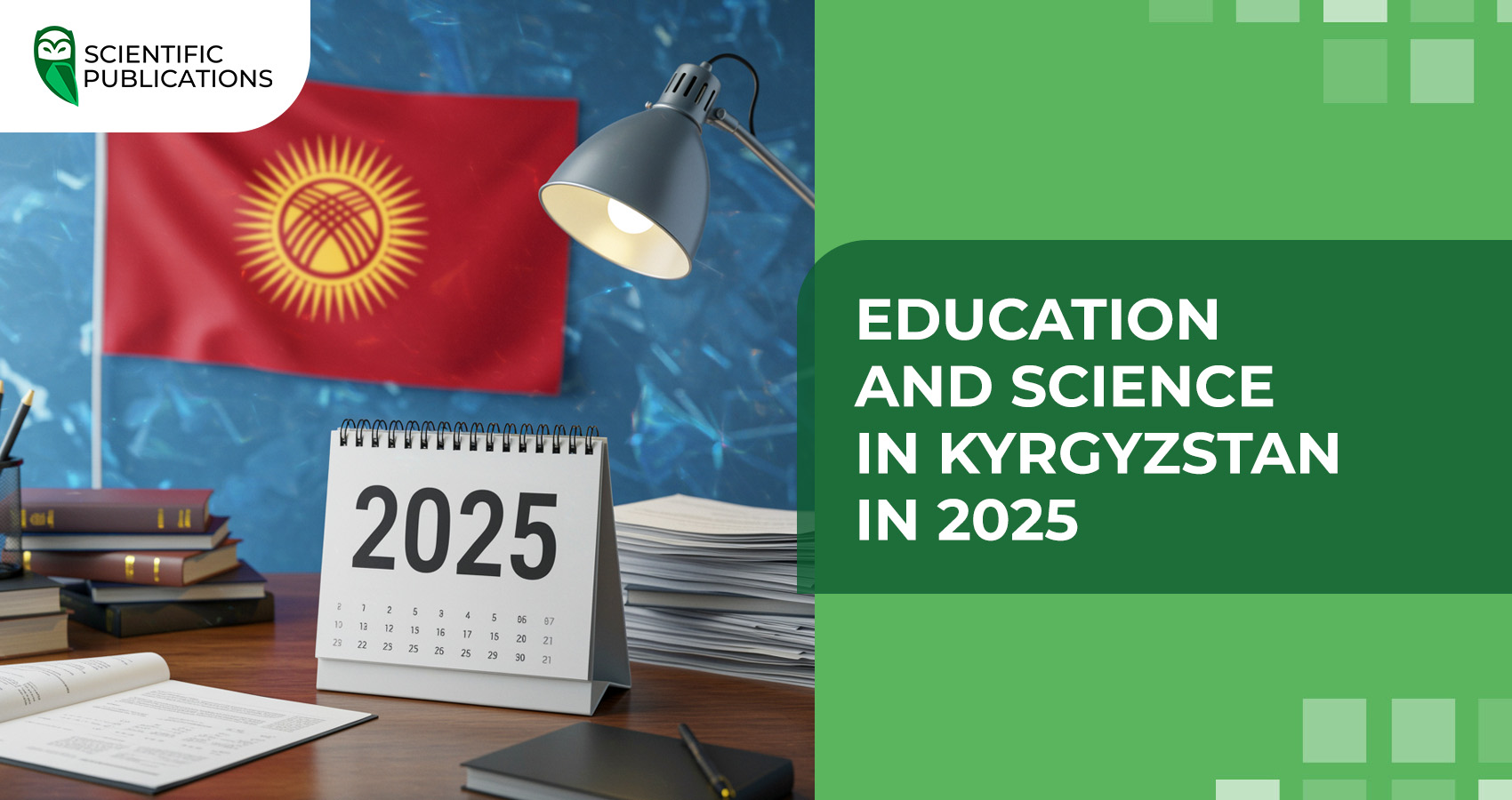For a scientist, publishing an article in a prestigious scientific journal means making a name for yourself as a researcher, confirming the relevance of your research topic, and being able to exchange thoughts and knowledge with the international scientific community. The key is to choose the right scientific journal to publish your research in. Today we will look at what Q2 journals are and how they affect the recognition of a scientist at the international level.

What is a journal quartile?
The journal quartile (Quartile, abbreviated as Q) reflects the influence of a publication within the scientometrics database and shows the level of popularity of the journal among the relevant category of its indexing.
What are Q2 scientific journals?
Q2 journals are considered to be of high quality, but somewhat less prestigious than Q1. However, they have a stable editorial policy, adhere to ethical standards of publication, and provide objective peer review. Journals in the second quartile are reputable and prestigious in the scientific community, providing high visibility of research.
Publishing a scientific article in Q2
If you want to gain recognition in the international scientific community, publishing your scientific articles in Q2 scientific journals is an effective way to do so.
- High level of trust of the scientific community. Publication in a Q2 journal indicates that the article has been thoroughly peer-reviewed and its results are significant for the relevant field of science.
- An opportunity to build an academic reputation. For postgraduate students, doctoral students and young researchers, publications in Q2 journals are important for building their CVs, participating in grant competitions, internships, and competitions for a degree.
- Citation and scientific communication. Publications in Q2 journals have a high chance of being cited by other scientists, which increases the Hirsch index and contributes to further scientific popularisation of the results.
Second-quartile journals enjoy high international prestige and provide wide visibility for scientific research at the global level. Publication in such journals helps to strengthen the academic status of a scientist, increase his or her influence in the scientific community, and open up opportunities for international cooperation. Due to the recognition among specialists from different countries, publications in Q2 journals are a significant step towards gaining recognition among scientists from other countries and increasing professional authority.
Submitting an article to a Q2 journal also requires considerable effort, although it is somewhat easier than in Q1. These journals maintain a high level of scientific standards, and their editorial boards and reviewers carefully scrutinise each manuscript. Compliance with the requirements and procedures is necessary for them not only to maintain their reputation, but also for a possible transition to the Q1 category in the future.
What to look for when preparing a publication?
Relevance to the journal's subject
Before submitting an article to a scientific journal, it is important to carefully check whether the subject of your research is relevant to the profile and scientific interests of the publication. Most journals have clearly defined goals, thematic areas, and requirements for the content of publications. If the submitted work does not meet these criteria – even if it is of a high scientific level – it will most likely be rejected without review.
It is worth not only reading the name of the journal or the general subject, but also carefully studying the publications that have already been published in it: what topics are covered, what methods are used, what problems are raised and how they are solved. This allows you to better understand the expectations of editors and reviewers, as well as to adapt your work so that it is interesting and relevant to the scientific community targeted by the journal.
Formatting in accordance with requirements
It is important to format a scientific article in accordance with all the requirements specified on the official website of the journal. Each journal has its own rules regarding the structure of the manuscript, length, references, bibliography, figures, tables, etc. Failure to comply with these requirements may result in automatic rejection or return of the article for revision before the review stage.
In addition, the text should be presented in a logical, consistent and clear manner to ensure easy comprehension for editors, reviewers, and readers. A clear structure is the key to successful peer review. Compliance with the technical and content requirements significantly increases the chances of a quick review and acceptance of the article for publication.
Originality and scientific novelty
The material should contain novelty – it can be both original ideas and new research results that significantly complement the existing knowledge in a particular field. It is important that the author offers not only a description of already known facts, but also presents his or her own vision, new theoretical approaches, methodological solutions or practical recommendations.
The value of an article lies not only in the interest of the journal's editors or reviewers, but also in the extent to which it is relevant, meaningful, and useful to the wider scientific community – the international community. This approach increases the chances of a successful publication, as journals seek to disseminate research that has the potential to be cited, influences the development of science globally, and promotes interdisciplinary dialogue.
Academic English
Q2 journals usually publish materials exclusively in English. Therefore, competent linguistic design is a mandatory requirement. The text must meet academic standards: it must be accurate, logically constructed, and free of grammatical and stylistic errors.
Even a substantively valuable paper may be rejected if the presentation makes it difficult to understand due to translation errors. When translating yourself, it is easy to make mistakes in the use of terminology or convey the meaning incorrectly, which distorts the scientific essence and creates difficulties for editors and reviewers.
If the article is written in English from the beginning, it is advisable to submit it for professional proofreading after completion of the text. The best solution is to contact translators or editors who have experience working with scientific publications – this greatly increases the chances of successful acceptance of the manuscript.
Do you want to publish a scientific article in Q2? Entrust it to Scientific Publications! For many years, we have been helping scientists publish their research, and as a result, we have gained considerable experience and in-depth knowledge. We will accompany you at every stage – from choosing a journal to successful publication, as well as provide post-publication support. Get a free consultation with our manager and ask all your questions. Let's get you to a successful publication together!





